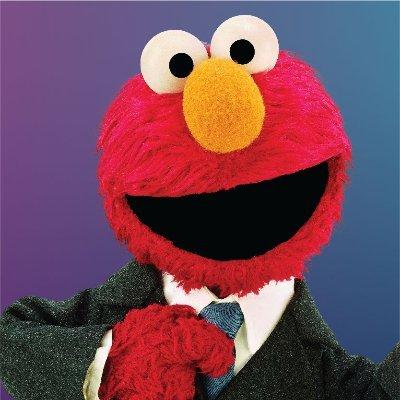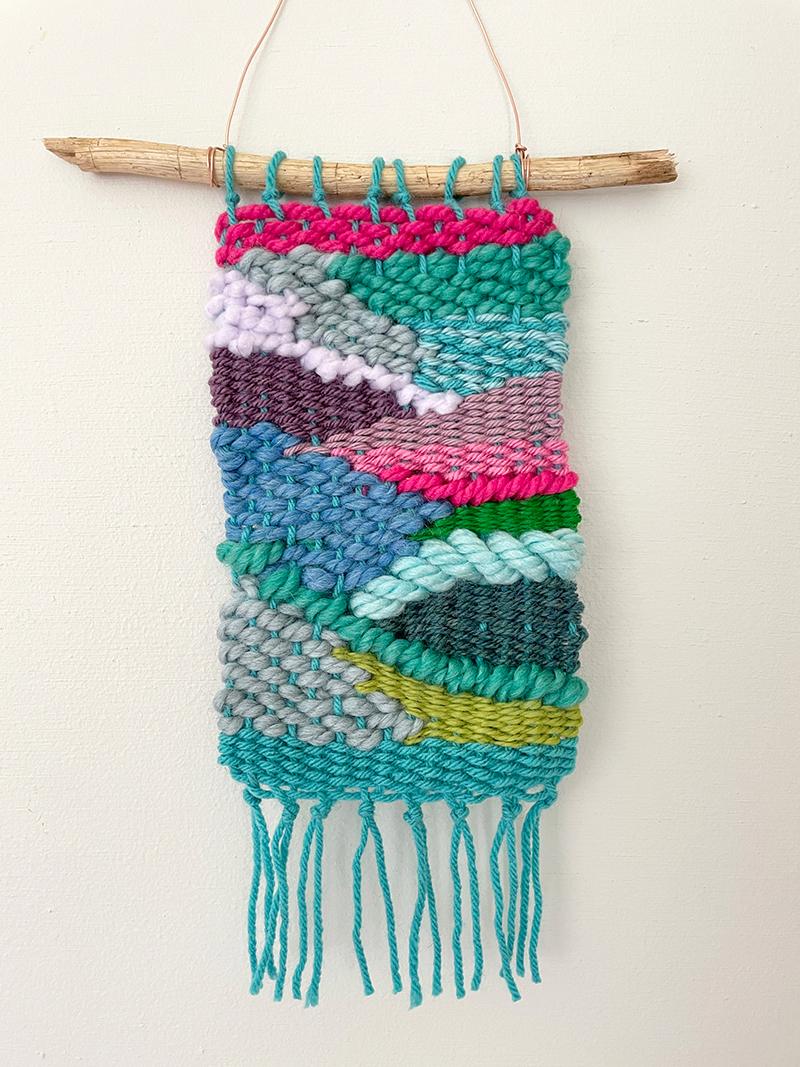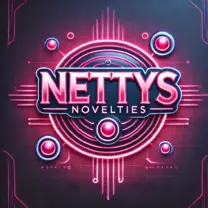Few cultural icons are as instantly recognizable, or as universally beloved, as a certain fuzzy red monster. For generations, Elmo has been a vibrant presence in the lives of children, synonymous with joy and discovery. as an engaging character, Elmo inspires learning activities, such as crafts focused on early literacy [[3]]. this article delves into the diverse ways Elmo helps us explore the world, from basic lessons for little ones to surprising connections extending even to our furry friends, and beyond, proving that learning with Elmo can span across various subjects and audiences.
The Secret Sauce of Elmo’s Learning Magic
What is it about that furry red monster that captivates audiences, spanning from giggling infants to surprisingly attentive canine companions? It’s not just the bright colour or the infectious giggle.There’s a carefully crafted blend of elements, a kind of educational alchemy, that makes Elmo a cornerstone in early learning experiences.
Part of the magic lies in his unfiltered authenticity and approachability. Elmo speaks directly to the viewer, often using simple, declarative sentences and repeating key phrases. His voice, a amiable falsetto, is non-threatening and comforting. Coupled with his signature happy dance and expressive movements,he creates an inviting,playful atmosphere that makes learning feel less like a task and more like a fun interaction.
The core of Elmo’s effectiveness is his masterful simplification of complex ideas. He breaks down concepts like sharing, emotions, or even basic arithmetic into digestible, relatable segments. He constantly asks questions, encouraging participation and mimicking conversation. This interactive style, even through a screen, taps into a child’s natural curiosity and desire to engage, reinforcing lessons through active involvement rather than passive observation.
Consider some of the foundational principles Elmo employs:
- Repetition with Variation: Concepts are revisited frequently but often presented in new contexts or scenarios.
- Positive Reinforcement: Every attempt the viewer makes is met with enthusiasm and encouragement.
- Focus on Social-Emotional Learning: Elmo often explores feelings, empathy, and friendship alongside academic basics.
- Universally Recognizable Cues: His laughter, his outstretched arms, his questioning tone are signals understood across developmental stages.
This combination of simple language, visual cues, excited interaction, and relentless positivity builds confidence in young learners. They aren’t afraid to try, to guess, or to laugh along with Elmo. This emotional connection is potent; it fosters a sense of trust and makes the learning process feel safe and enjoyable. For incredibly young viewers, this initial positive exposure to educational content is invaluable.
Ultimately, elmo’s unique ‘sauce’ is a recipe perfected over years: sprinkle in heaps of unconditional acceptance, blend with simple, clear communication, add a dash of infectious joy, and serve consistently. This powerful mix bypasses conventional barriers, making basic concepts accessible and enjoyable, proving that sometimes, the most effective teaching happens when you’re just being yourself – a happy, loving Monster.

First Words and Fuzzy Friends A Baby’s Guide to learning with Elmo
For the youngest learners, the world is a swirling landscape of new sounds, shapes, and sensations. It’s a time of monumental leaps in growth, particularly when it comes to language. Enter a certain furry, red friend who has become synonymous with early childhood education. His cheerful disposition and simple interactions provide a gentle onramp for babies beginning to vocalize their first interpretations of the world around them. His familiar voice and repetitive phrasing create a comforting and predictable habitat where sounds start to become words.
The magic frequently enough lies in the simplicity.Elmo uses short sentences, clear pronunciation, and frequently repeats key words or phrases. This repetition isn’t just for fun; it’s a fundamental building block for language acquisition in infants. By hearing words like “ball,” “car,” or “up” associated with visuals and actions, babies begin to make those crucial connections. His exaggerated expressions and enthusiastic tone also help capture and hold a baby’s attention, making the learning process engaging rather than overwhelming. It’s about breaking down complex communication into manageable, bite-sized pieces.
But learning isn’t just about individual words. Sesame Street, Elmo’s home, is brimming with “fuzzy friends” who introduce babies to the concepts of interaction and emotion. Watching gentle exchanges between characters helps babies understand social cues and the give-and-take of conversation, even before they can fully participate themselves. The diverse cast helps normalize different appearances and personalities, subtly teaching inclusion from the very beginning. These friendly faces provide a warm, welcoming context for all the new details being absorbed every day.
Think about the simple concepts that become foundational vocabulary for babies. Elmo and his friends make learning these words an interactive experience. Here are just a few examples of early words often featured:
- Hello
- Bye-bye
- More
- Ball
- dog
- Happy
Through songs, simple games, and everyday scenarios depicted on screen, these words are reinforced through multiple senses, making them stick in a baby’s burgeoning memory.
Visual learning plays a critical role at this stage. The bright colors, distinct character designs, and clear objects shown alongside spoken words help solidify understanding. When Elmo talks about a “cookie” and a picture of a delicious cookie is shown, or when he sings about being “happy” and displays a big smile, the visual cue enhances the auditory input. this multi-modal approach caters perfectly to how babies learn – by seeing, hearing, and eventually, imitating. The catchy songs, often featuring simple actions, also encourage physical engagement and memory recall.
Ultimately, engaging with Elmo and the world of Sesame Street provides a wonderful, low-pressure opportunity for babies to take their first steps into language and social understanding. It’s more than just entertainment; it’s a
Beyond the Ball Can Elmo teach an Old Companion New Tricks
We frequently enough think of Elmo’s audience as exclusively pint-sized humans, their eyes wide with wonder at the furry red monster offering hugs and lessons on letters and numbers. His infectious enthusiasm and repetitive, simple language are perfectly tailored for developing minds. But what happens when Elmo’s reach extends beyond the nursery? Could the pedagogical power of Sesame Street’s most effervescent resident find purchase in a more unexpected corner, perhaps with companions who rely more on instinct and learned behavior than ABCs?
The old adage insists that you can’t teach an old dog new tricks. It speaks to the perceived rigidity that comes with age, a comfort in established routines and a resistance to change. Humans aren’t immune to this, of course, but the phrase typically targets our canine cohabitants.However, Elmo operates outside of traditional training paradigms. He teaches through pure joy and engagement, a method that transcends conventional boundaries. Could this unique approach challenge the notion that certain companions are set in their ways once past their formative years?
Consider Elmo’s methodology: he employs short, memorable phrases, uses expressive body language (or muppet language, as it where), and repeats concepts with remarkable
Elmo’s Lessons for Grown ups Embracing Emotions Together
We often turn to complex philosophies or self-help books to navigate the labyrinth of human emotions. Yet, sometimes, the most profound lessons come from the simplest sources. Consider Elmo, everyone’s favorite furry friend. While his target audience is undeniably tiny humans, his approach to feelings holds surprising depth and practicality for grown-ups who might find themselves tangled in the messy business of emotional intelligence.
At its core, Elmo’s emotional vocabulary is direct and uncomplicated. Feeling happy? Say “Elmo is happy!”. Feeling sad? Say “Elmo is sad!”. There’s no jargon, no overthinking, just the acknowledgement of the present emotional state. This fundamental act of naming our feelings, without promptly analysing why or what to do about it, is a powerful first step that many adults could benefit from revisiting.It’s about awareness and simple identification before anything else.
Beyond just naming, Elmo teaches us radical acceptance. When elmo feels overwhelmed or frustrated, he expresses it without shame. There’s no indication that feeling a arduous emotion is inherently “bad” or something to hide. His world validates the feeling itself, as a natural part of existence. This contrasts sharply with the adult impulse to suppress, rationalise, or judge uncomfortable emotions. Think about it:
- Are we allowed to simply feel angry without justifying it?
- Can we sit with sadness without immediately trying to “fix” it?
- Do we give ourselves permission to be fully joyful without cynicism?
Elmo’s expressions are often physical and direct, but rarely harmful. He might jump with joy, sigh when sad, or even get a little loud when frustrated, but the focus remains on the feeling’s energy, not its destructive potential. For adults, this translates to finding healthy outlets for emotional release. It’s not about bottling things up, but about acknowledging the energy of an emotion and channelling it in ways that don’t cause harm to ourselves or others.
Furthermore, Elmo’s interactions often involve sharing feelings and responding with empathy. When a friend is sad, Elmo shows concern. When they’re happy, he celebrates with them. This simple emotional resonance fosters connection. Adults can learn from this straightforward approach to empathy. Sometimes, just acknowledging someone else’s feeling is enough to build a bridge. Let’s look at a simple comparison:
| Elmo’s Way | Adult Complexity |
|---|---|
| “Elmo is sad. What’s wrong?” | “I see you’re upset. Have you tried…?” |
| “Elmo is happy! Yay!” | “That’s good news! Though, remember…” |
| Simple hug or pat | Giving unsolicited advice |
Ultimately, Elmo reminds us that emotional honesty doesn’t need to be complex. It’s about recognising, accepting, and expressing our feelings in simple, authentic ways, and extending that same grace to others. Embracing our emotions together,like Elmo and his friends do,strengthens bonds and allows for a more genuine experience of the world,one feeling at a time.

Weaving Elmo into Daily Rhythms practical Strategies for Engagement
Introducing Elmo into a baby’s day offers a familiar, friendly face to help navigate the world. Begin with simple moments, like a cheerful “Good morning!” from an Elmo plush toy placed gently nearby during waking hours. This isn’t about constant screen time, but rather leveraging the comfort and recognition a beloved character provides in tangible ways. Imagine Elmo peeking from the side of the crib or stroller as a baby explores their surroundings, turning a quiet observational moment into a soft interaction. These early integrations build positive associations with Elmo beyond just the show.
Routine tasks, often met with resistance, can find a playful ally in our furry red friend. During diaper changes or getting dressed, narrating Elmo’s involvement (“elmo is helping put on Sock!”) or even having the toy model actions can make these necessary moments more engaging. boldly stating, “It’s time for a clean diaper with Elmo!” adds a touch of silliness that can distract and delight. The goal isn’t perfection, but finding small pockets of joy and connection in the everyday rhythm.
Playtime becomes an adventure when elmo joins in. Use Elmo as a character in simple games like peek-a-boo behind hands or a blanket. Let Elmo explore different textures or sounds with your baby – maybe Elmo “touches” a soft blanket or “listens” to a rattle. This tactile exploration,guided by a familiar character,encourages curiosity and sensory development. Think of Elmo not just as a passive object, but an active, albeit silent, participant in discovery.
Basic learning concepts can be introduced through Elmo’s world. Point to Elmo’s nose or mouth, identifying simple body parts. explore colours by showing colourful objects to Elmo. A simple table can track these mini-lessons integrated into daily activities:
| Activity | Concept | Elmo’s Role |
|---|---|---|
| Getting Dressed | Colours (e.g.,Blue socks) | Elmo “sees” the colour |
| Tummy Time | Body Parts (e.g., Nose) | Pointing to elmo’s/Baby’s nose |
| Snack Time | Shapes (e.g., Cracker shape) | elmo “likes” the shape |
This integrates learning naturally, without pressure.
Winding down is crucial, and Elmo can be a calming presence. Incorporate Elmo into naptime or bedtime routines. Reading an Elmo book, singing a gentle Elmo song quietly, or simply letting Elmo cuddle nearby can signal that it’s time to transition to rest. These quiet activities reinforce the bond and provide comfort during moments that can sometimes be challenging for little ones.Consider integrating actions like:
- Softly singing Elmo songs.
- Reading a page from an Elmo book.
- Giving Elmo a gentle hug.
- Placing Elmo nearby for security.
These rituals become anchors in the day.
Elmo can subtly encourage social interaction and exploration of the surrounding world. Use Elmo to model simple sharing – “Let’s share Elmo with [sibling/parent]!” or ”Elmo wants to see that [toy/object].” this gentle guidance helps introduce ideas of interaction and shared attention. Even introducing Elmo to other familiar elements
Tracking the Wiggles and Giggles Noticing Progress Through play
The world of a baby is a whirlwind of sensory exploration, a constant state of discovery driven by instinct and burgeoning curiosity. For us, the observers, it might look like simple reaching, grabbing, or just… wiggling. But within this seemingly chaotic symphony of tiny movements and vocal experiments lies a wealth of information, a dynamic roadmap of development unfolding before our eyes. Every delighted squeal, every determined push, every unexpected roll is a data point, a tiny flag marking progress on their unique developmental journey.
Think of it as a fascinating research project where the subject is a tiny human and the lab is your living room.Through intentional, joyful play – perhaps inspired by a cheerful Elmo song or a shared gaze with a gentle family dog – we gain insight into their growing abilities. are they reaching consistently for that colourful ring? Are their kicks becoming more deliberate? Do their “giggles” sound different depending on the interaction? These aren’t just cute moments; they are evidence of cognitive leaps, gross and fine motor skill refinement, and developing social awareness.
observing specific play patterns provides valuable clues without needing formal assessments. Look for these signs during your everyday interactions:
- Tracking with Eyes: Following a favourite toy (or maybe even a slow-moving dog tail!) across their visual field.
- Hand-Eye coordination: Successfully bringing an object, like a soft blocks, to their mouth or transferring it between hands.
- Cause and Effect: Repeatedly dropping an item just to hear it fall or pushing a button to make Elmo music play.
- Vocalization Exploration: Experimenting with different sounds,babbling patterns,or responding to familiar voices or songs.
- Motor Milestones: Rolling over, pushing up, attempting to sit, or making determined efforts to crawl towards a desired object.
Here’s a simple snapshot of connections you might notice:
| Play Activity | What It May show |
|---|---|
| Reaching for hanging toys | Developing hand-eye coordination,depth perception |
| Laughing at silly faces | Developing social connection,recognizing expressions |
| Kicking legs rhythmically | Strengthening large muscles,body awareness |
| Turning head towards sounds | Auditory processing,spatial awareness |
It’s crucial to remember this isn’t about pressure or strict schedules. It’s simply about being present and noticing. The most effective tracking happens naturally when we’re engaged in play, responding to their cues, and sharing moments of delight. Sometimes, even the quiet observation of a pet reacting gently to a baby’s tentative pat can provide subtle insights into the baby’s developing fine motor control and understanding of interaction.
This informal, play-based observation transforms everyday moments into valuable insights. It’s a continuous, joyful discovery process for both caregiver and child. By appreciating the journey embedded within each wiggle and giggle, we celebrate their incredible capacity for learning and growth, nurtured by the simple power of play, curiosity, and connection.
The Enduring Power of Empathy Sharing Elmo’s Core Message
Beyond the infectious giggle and the fuzzy red fur lies a message far more profound than simple merriment. Elmo, in his gentle, unassuming way, serves as a conduit for one of humanity’s most vital connection points: empathy. it’s not just about learning colors or counting; it’s about understanding that Big Bird might feel lonely, or that a puppy might be scared in a new home.This foundational concept, woven into the fabric of every interaction, forms the quiet core of his enduring appeal and educational impact.
Empathy,in Elmo’s world,is stripped down to its most accessible form. It’s not a complex psychological theory, but a practical, actionable response to the feelings of others. It’s the simple act of noticing when someone is sad,asking them why,and then offering comfort or understanding. This pure, uncomplicated demonstration makes it easy for the youngest viewers, and frankly, adults too, to grasp the basic principle: other people (and creatures!) have feelings, and those feelings matter.
The genius lies in the delivery. Elmo doesn’t preach; he lives it. Through songs about feelings, stories illustrating different emotional states, and his direct, curious interactions with everyone he meets – from Grover navigating frustration to a visiting toddler experiencing shyness – he models what it means to connect on an emotional level. It’s a constant, gentle reminder that the world looks different from someone else’s eyes.
The ‘sharing’ aspect of this message extends beyond toys and cookies. It’s about sharing the emotional landscape. Elmo encourages expressing one’s own feelings (“Elmo is feeling happy today!”), which in turn validates the feelings of others. he teaches that it’s okay to feel sad or angry and that talking about it helps. This mutual sharing of emotional experiences builds bridges of understanding, fostering patience and compassion.
The enduring power of this message lies in its universality and its practical submission in fostering constructive relationships. It extends far beyond interactions between children. The simple lessons about recognizing and responding to emotions are crucial whether you’re consoling a sibling, understanding a friend, or even trying to interpret the needs of a pet. It equips individuals with the basic tools needed to navigate the complex social world with kindness and understanding.Consider these simple,powerful actions:
| What Elmo Frequently enough Shows | Underlying Empathy Lesson |
|---|---|
| Asking “How are you feeling?” | Recognizing and valuing others’ emotional states. |
| Offering a hug or physical comfort | providing tangible support and connection. |
| Listening closely when someone talks about their feelings | Validating their experience and showing respect. |
| Talking about his own feelings simply | Modeling emotional honesty and creating relatability. |
Elmo’s core message about sharing empathy is a cornerstone for developing emotional intelligence and building a more compassionate community, one simple interaction at a time. It’s a reminder that understanding and caring for others’ feelings isn’t just a nice idea; it’s a vital skill for navigating life, fostering positive connections, and building a kinder world, whether you’re a baby learning about tears or an adult trying to comfort a four-legged friend.
Closing Remarks
As our exploration of “Learning with elmo: Babies, Dogs, and More!” concludes, it appears the fuzzy red face continues to navigate diverse learning landscapes. From the foundational ABCs shared with tiny humans to unexpected applications in multi-species environments, Elmo’s presence remains a curious constant. whether fostering early literacy or perhaps inspiring behavioral cues in our canine companions, the intersection of iconic children’s media and varied learning scenarios offers an intriguing, if perhaps unconventional, study in educational reach. The full scope of Elmo’s potential influence, it seems, is still being written, one cheerful giggle or perhaps one trained paw-shake at a time.
